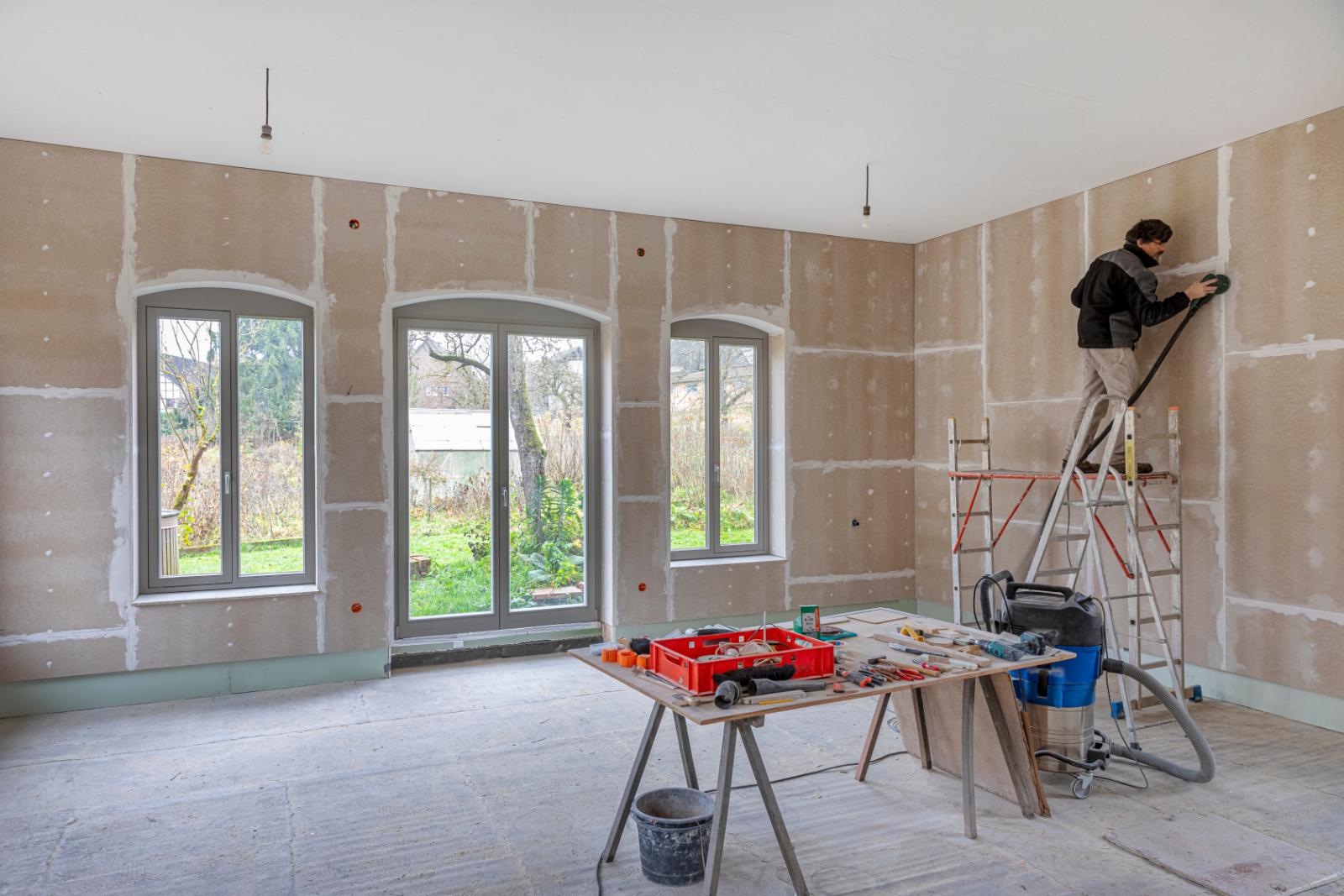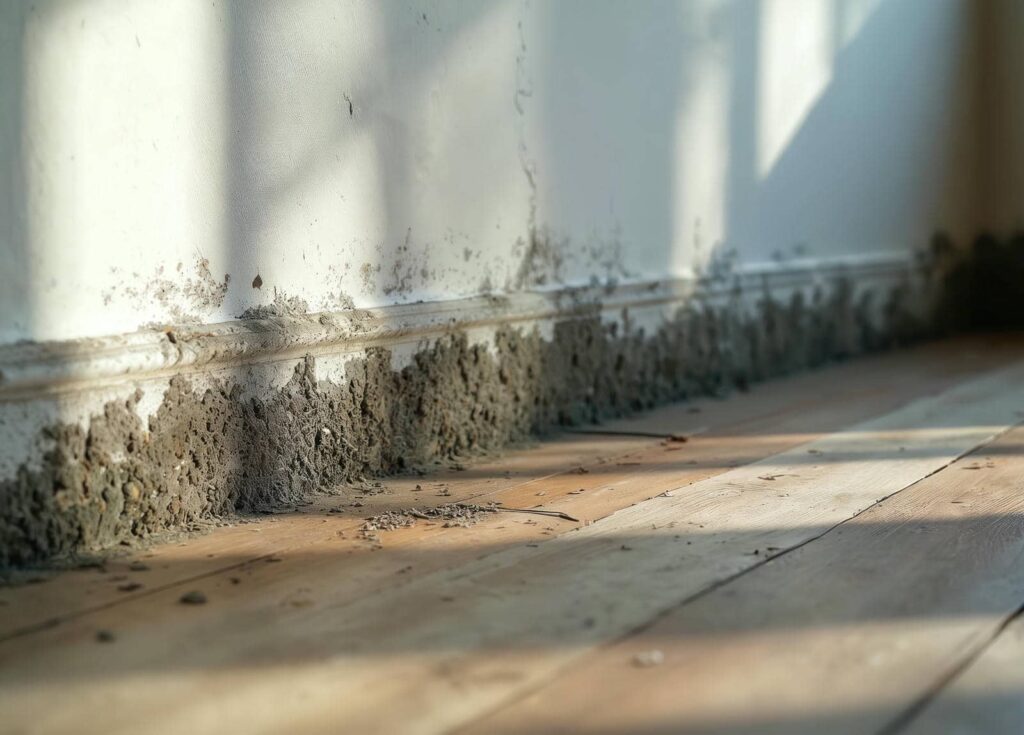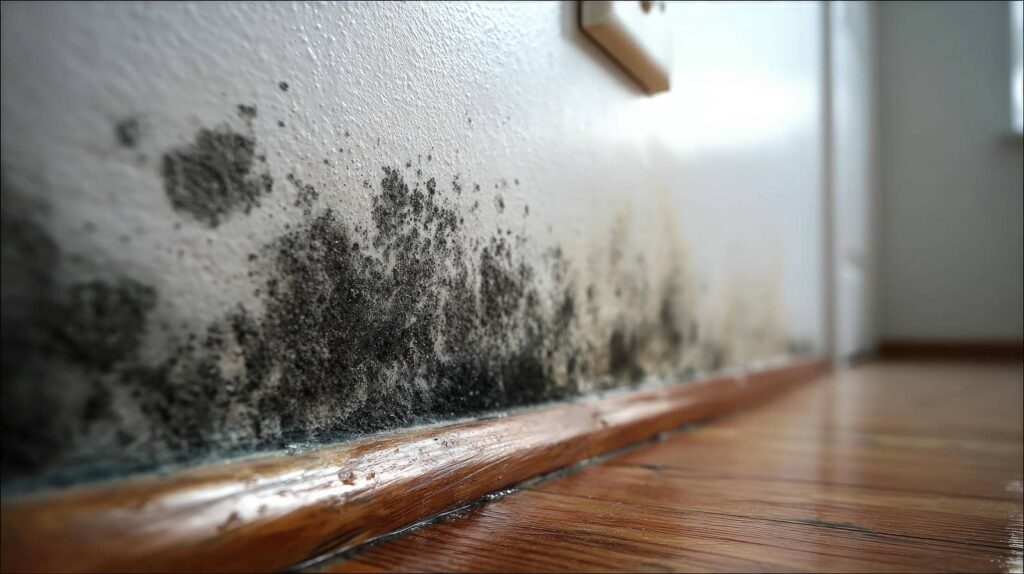Contents
You may not be aware that the way you cut drywall can have a substantial impact on the overall outcome of your project. Efficient drywall cutting tips can make a world of difference in the precision and quality of your work. From minimizing errors to achieving clean cuts, these strategies can streamline your installation process while ensuring a professional finish. But how exactly do these tips enhance your results? Let’s explore the benefits and techniques that can elevate your drywall-cutting game.
Key Takeaways
- Achieve precise cuts for a professional finish and reduce errors.
- Save time and effort by using proper cutting techniques.
- Ensure accuracy by double-checking measurements before cutting.
- Minimize mistakes and adjustments during installation.
- Prioritize safety with correct tools and personal protective equipment.
Importance of Precise Measurements
When cutting drywall, ensuring accurate measurements is vital for achieving a professional and smooth finish. Accurate measurements lay the foundation for precise cuts, minimizing errors, and reducing the need for excessive adjustments during installation.
To ensure cutting accuracy, start by measuring the dimensions of the area where the drywall will be installed using a reliable tape measure. Take multiple measurements to double-check the accuracy and maintain consistency across the board. Remember, the old saying, ‘Measure twice, cut once,’ holds true in the world of drywall cutting.
After obtaining accurate measurements, transfer them onto the drywall using a pencil or a scoring tool. Make sure to mark the cutting lines clearly to avoid confusion during the cutting process.
Use a straight edge, such as a T-square or a level, to guide your cutting tool along the marked lines accurately. This step is essential in achieving clean, straight cuts that fit seamlessly into place.
Selecting the Right Cutting Tools
Selecting the appropriate cutting tools is essential for efficiency and accuracy when working with drywall. A few key items must be taken into account to ensure the best cutting accuracy possible.
Firstly, a utility knife is a versatile tool vital for any drywall-cutting project. Opt for a retractable blade knife with a comfortable grip that allows you to easily score and cut through drywall sheets with precision. Additionally, having a sharp blade is important to guarantee clean and accurate cuts.
Another essential cutting tool for drywall is a drywall saw. This hand tool is perfect for cutting cut-outs for electrical outlets, windows, and doors. Look for a drywall saw with a sharp, pointed tip and a comfortable handle to make accurate cuts effortlessly.
For larger projects or straight cuts, consider using a drywall T-square. This tool helps you create straight lines and precise cuts along the length of the drywall sheet. Pairing the T-square with a utility knife or drywall saw can greatly improve your cutting accuracy and overall efficiency.
Proper Technique for Straight Cuts
Mastering the proper technique is key to ensuring clean and accurate results when achieving precise straight cuts in drywall. When cutting accuracy, begin by selecting the appropriate blade for the job. A sharp utility knife with a retractable blade is often the tool of choice for straight cuts. Make sure the blade is new or sufficiently sharp to prevent tearing or jagged edges on the drywall.
To start, measure and mark the cut line accurately on the drywall surface using a pencil and a straight edge. Next, using the utility knife, score along the marked line by applying firm pressure. Repeat the scoring a few times until you cut through the paper layer on the drywall. Avoid pressing too hard to prevent damaging the underlying gypsum core.
After scoring, gently snap the drywall along the scored line by placing one hand on each side of the cut and applying pressure. Finally, use the utility knife to cut through the gypsum core on the backside. This two-step cutting process helps achieve a clean and precise straight cut.
Tips for Cutting Curves and Angles
Achieving precise cuts on drywall curves and angles demands mastering specific techniques to ensure clean and accurate results.
Using advanced tools such as a drywall router or a jab saw with a narrow blade can make all the difference when it comes to curved cuts. These tools allow for smoother, more controlled cuts along curved lines, ensuring your drywall fits perfectly into place without any gaps or overlaps.
For angle cutting, precision techniques are essential. Start by measuring and marking the angle accurately on the drywall using a pencil and a protractor. To make the cut, you can use a keyhole saw or a drywall saw, ensuring you follow the marked line closely. Take your time and cut slowly to prevent any mistakes and achieve a clean edge.
When cutting both curves and angles, remember to test your cuts on scrap drywall first to make sure you have the technique down before making the final cut. Practice makes perfect, so don’t be discouraged if your first few attempts aren’t flawless.
With patience and persistence, you’ll soon become adept at cutting curves and angles with precision and ease.
Avoiding Common Cutting Mistakes
To guarantee clean cuts and avoid errors, remember that precision is key when working with drywall. Technique matters just as much as the tools you use, so take your time and focus on accuracy.
Precision Is Key
Achieve precise drywall cuts by carefully measuring and marking before using your cutting tool. Achieving cutting accuracy and clean edges requires attention to detail and the right tools.
Here are four essential tips to help you master the art of precise drywall cutting:
Use a sharp utility knife: A sharp blade will effortlessly glide through the drywall, ensuring clean cuts without tearing or ragged edges.
Invest in a quality T-square: A T-square is a valuable tool for marking straight and precise cutting lines on the drywall, leading to accurate cuts.
Secure the drywall: To prevent shifting while cutting, use clamps or have a partner hold the drywall steady for a smoother cutting process.
Double-check measurements: Measure twice, cut once. Confirm your measurements are accurate before making any cuts to avoid wastage and errors.
Technique Matters
Master proper cutting techniques and avoid common mistakes to achieve precise and clean drywall cuts. Technique matters greatly when it comes to drywall cutting. One key aspect to bear in mind is tool maintenance. Make sure your cutting tools are sharp and in good condition to make clean cuts effortlessly. Dull blades can lead to jagged edges and uneven cuts, resulting in a less polished finish.
Another important point to consider is minimizing material waste. By using the correct cutting technique, you can reduce the amount of drywall wasted during the cutting process. Wastage not only impacts your budget but also increases the time spent on cleanup and disposal.
To avoid common cutting mistakes, always measure twice and cut once. Rushing through measurements can lead to inaccurate cuts and unnecessary wastage. Additionally, practice your cutting technique on scrap pieces before working on the actual drywall to ensure precision.
Efficient Drywall Cutting Hacks
For more precise and efficient drywall cutting, consider implementing these hacks.
Invest in a Quality Utility Knife:
A sharp utility knife is essential for making precise cuts in drywall. Make sure to change the blade frequently to maintain sharpness and efficiency.Utilize a T-Square:
A T-Square is a handy tool for guaranteeing straight cuts. By firmly holding the T-Square against the drywall and running your utility knife along its edge, you can achieve clean and accurate cuts every time.Score and Snap Method:
To quickly and cleanly cut drywall, use the score and snap technique. Score the drywall with your utility knife, then snap it along the scored line for a neat break.Create Cutting Templates:
For repetitive cuts, creating cutting templates out of scrap drywall can save time and ensure uniformity. Simply trace the template onto the drywall and cut along the lines for consistent results.
Safety Precautions for Cutting Operations
When engaging in drywall cutting operations, make sure to prioritize cutting tool safety by using sharp blades and handling tools with care.
Additionally, always wear the necessary personal protective equipment like safety goggles, gloves, and a dust mask to safeguard yourself from potential hazards.
Cutting Tool Safety
To ensure a safe and efficient cutting operation, always remember to prioritize proper safety precautions when using cutting tools. Workplace safety and tool maintenance are key aspects to take into account for a smooth cutting process.
Here are four essential safety precautions to keep in mind:
Inspect Your Tools Regularly: Before each use, check your cutting tools for any signs of damage or wear. Replace or repair any faulty parts to confirm safe operation.
Wear Appropriate Personal Protective Equipment (PPE): Always wear safety goggles, gloves, and ear protection when operating cutting tools to prevent injuries from debris and loud noises.
Follow Proper Cutting Techniques: Make sure to use the correct cutting tool for the job and adhere to the manufacturer’s guidelines for safe operation. Avoid making awkward cuts that could lead to accidents.
Secure Your Workpiece: Properly secure the material you’re cutting to prevent it from moving unexpectedly during the cutting process, reducing the risk of accidents and injuries.
Personal Protective Equipment
Prioritize your safety during cutting operations by wearing the appropriate personal protective equipment (PPE) at all times. Safety gear, such as safety goggles, a dust mask, and work gloves, is vital to protect yourself from potential health hazards while cutting drywall. Safety goggles shield your eyes from flying debris, dust, and other particles that may cause irritation or injury. A dust mask helps prevent inhalation of harmful dust particles, reducing the risk of respiratory issues. Work gloves provide a better grip on tools and protect your hands from cuts and scrapes.
When using cutting tools on drywall, it’s important to be mindful of the health hazards associated with the task. Dust produced during cutting operations can contain harmful substances such as silica, which, when inhaled, can lead to serious respiratory conditions over time.
Recap
In the world of drywall cutting, precision is key to a successful project. Just like a skilled surgeon uses the right tools and techniques to perform a precise operation, a knowledgeable drywaller must also apply efficient cutting tips for a flawless finish.
By focusing on accurate measurements, proper tool selection, and mastering cutting techniques, you can guarantee a smooth and professional installation process. Remember, attention to detail is what sets the experts apart from the amateurs.




